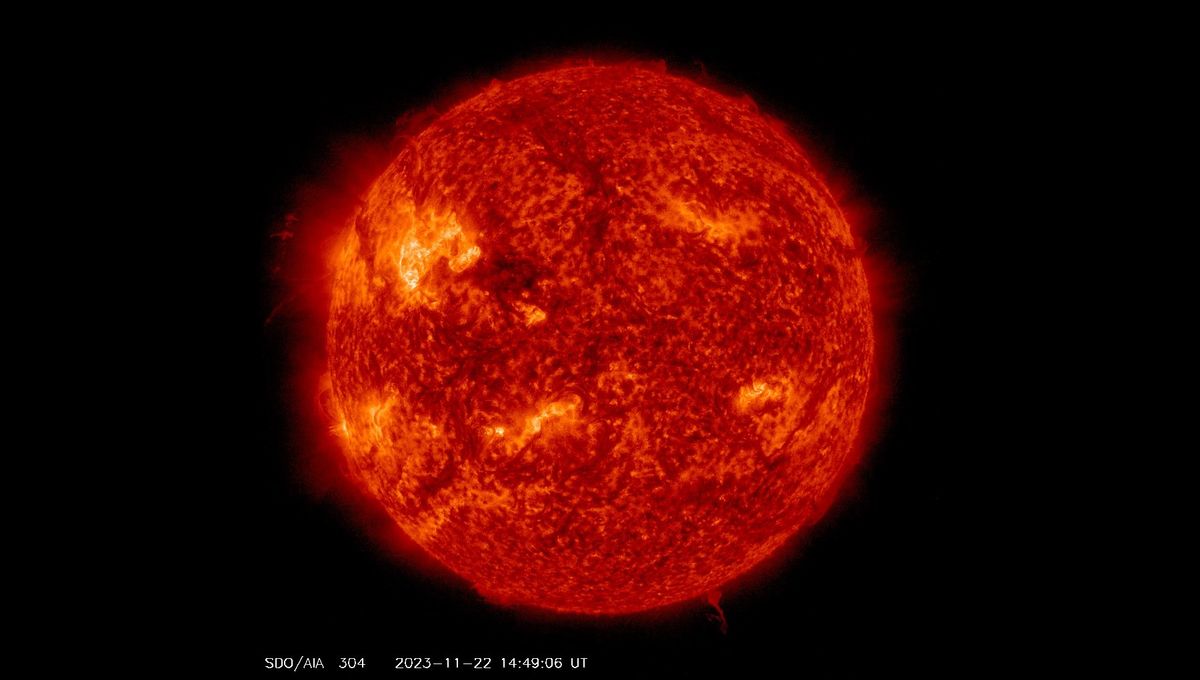
Despite physicists’ insistence and ease of calculation, celestial bodies are not perfect spheres (or point masses). Their surfaces could be rugged or their boundaries unclear. When it comes to stars, the one we know best is the Sun and it seems like we do not know it quite as well as we thought – different ways to measure its size do not exactly agree on a single number.
The officially accepted radius of the Sun is estimated to be 695,700 kilometers (432,288 miles). This was established in 2015 by the International Astronomical Union and it is estimated by observing the photosphere, the deepest layer of the atmosphere of the Sun. That is what we usually consider the surface of the Sun and what is used in models.
But this is not the only way to measure the size of the Sun. Researchers have used completely different methods to estimate the size of our star. In new work, there is a small difference; the authors believe that the radius of the Sun is a few hundredths percent larger than the official photospheric radius.
Researchers Takata and Gough, from the University of Tokyo and the Institute of Astronomy respectively, have applied asteroseismology to the Sun. They tracked the motion of waves within our star, literal solar oscillations. These oscillations are known so precisely that they can be used to make estimates of the general properties of the Sun, including its size.
Sound waves called f-waves have been used in the past to estimate the radius. These waves are quite close to the surface and using them, researchers found a value that was different from the photospheric estimate. In the new study, Takata and Gough look at p-waves. These are waves that pass through the entirety of the Sun, including its core.
“It’s a different method. I wouldn’t say it’s better. It has some advantages and disadvantages. P-modes are sound waves, and they propagate right through the Sun. So they are actually giving a measure of the entire Sun. Whereas the f-mode is a surface wave and it’s measuring the surface layers,” Professor Douglas Gough said to IFLScience when asked about choosing this method to estimate the size of the Sun.
The paper found the radius of the Sun to be 695,780 kilometers (432,340 miles), about 80 kilometers larger than the official record. The difference is small but it matters with the high-precision analysis humanity conducts on the Sun and beyond. And it might mean that the current model of the Sun is not exactly correct.
“The acoustic waves are measuring things deeper down. They are giving you a measure of the radius of the Sun as seen from the inside of the Sun, rather than, if you like, from the outside. And so that’s the difference. And so there are two different measures,” Professor Gough explained to IFLScience.
Why are wave methods and visual methods giving different results? It is currently unclear. One possibility Tanaka and Gough are keen to investigate has to do with the solar cycle, the variation in activity that our star experiences every 11 years.
It is possible that the cycle might affect more so the surface and brightness of the Sun, so altering the measurements in the f-mode and photosphere. But it is equally possible that it’s a deeper phenomenon, and that p-waves will be affected too, and the differences might have to be found elsewhere.
There is a lot going on in the Sun and we do not fully understand our star. This study confirms that more research is necessary to solve the many mysteries surrounding the Sun, but small variations in radius may affect other disciplines beyond astronomy. Solar neutrinos, for example, come from the core of the Sun and they are studied here on Earth, providing insight into nuclear physics. Their numbers, however, are very sensitive to the size of the Sun. If the Sun is slightly bigger or smaller, the flux will be much bigger or smaller – something very important in many theories.
The study is published in Monthly Notices of the Royal Astronomical Society.
Source Link: How Big Is The Sun? Turns Out We Aren’t Exactly Sure